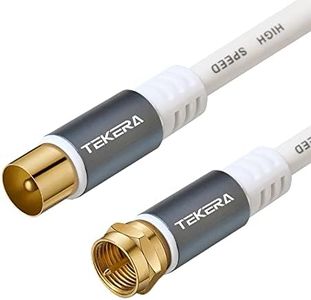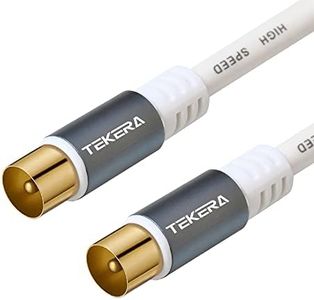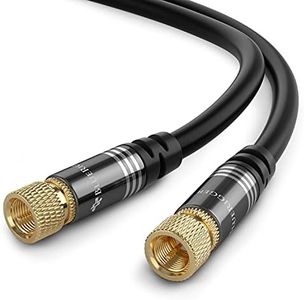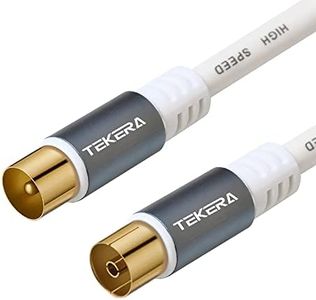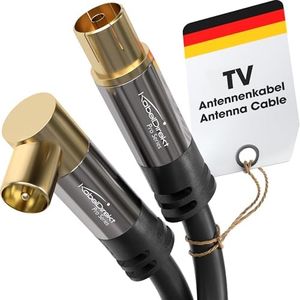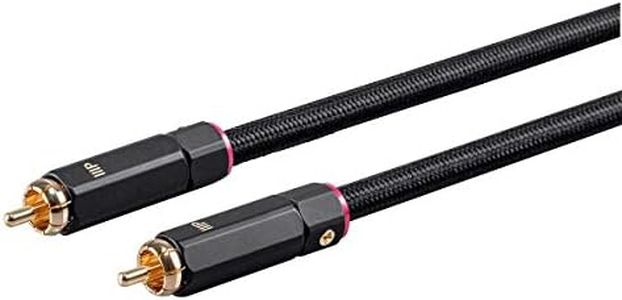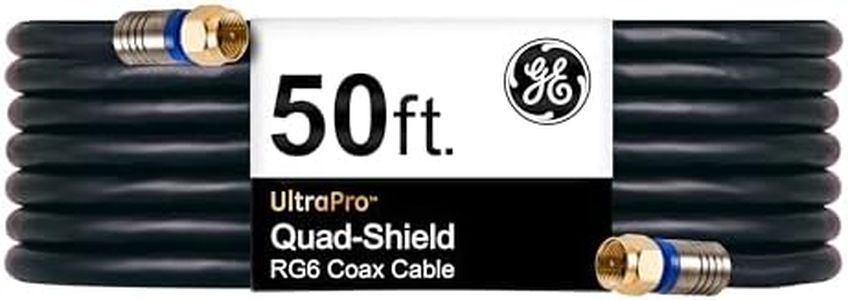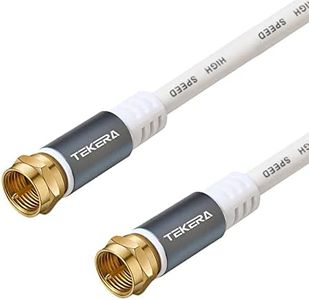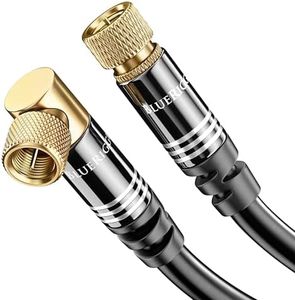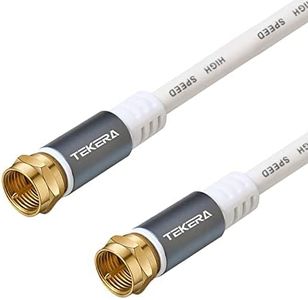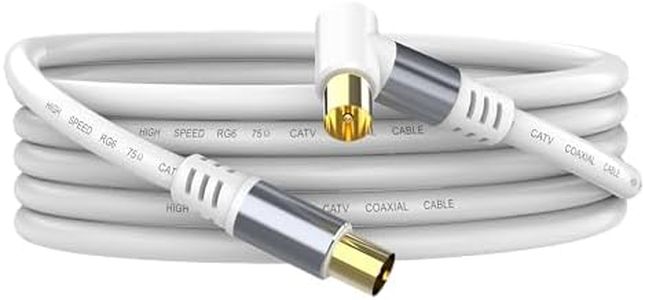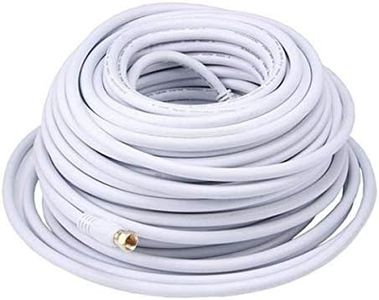We Use CookiesWe use cookies to enhance the security, performance,
functionality and for analytical and promotional activities. By continuing to browse this site you
are agreeing to our privacy policy
10 Best Coaxial Cables
From leading brands and best sellers available on the web.By clicking on a link to a third party's website, log data is shared with that third party.
Buying Guide for the Best Coaxial Cables
When choosing a coaxial cable, it's important to consider how you plan to use it, such as for television, internet, or radio connections. A coaxial cable's purpose is to transmit signals with minimal interference, so selecting the appropriate type and quality matters for your signal clarity and strength. Assess where you'll install the cable (indoors or outdoors), the distance you need to cover, and the devices you'll connect, as these can all influence which specifications are most important for your situation.ImpedanceImpedance is a measure of resistance to electrical signal flow, typically shown in ohms. Most home applications use cables with 75 ohms (like for TV or internet), while some specialized or commercial settings use 50 ohm cables. Using the wrong impedance may cause signal loss or poor performance. Always check what your equipment requires and match the cable impedance to it for best results. For general TV and internet, 75 ohm is usually the right choice.
ShieldingShielding refers to the layers and type of material wrapped around the cable’s core to block outside interference. You’ll see options like single, dual, or quad shield. More layers (like dual or quad) mean better protection from signal loss due to interference, especially important in areas with lots of electronic devices or when running the cable over longer distances. If you live in a crowded area with lots of electronics or need to run a long cable, go for better shielding; otherwise, basic shielding is often sufficient for simple, short runs.
Cable Thickness (RG Type)This is often described by an RG rating (such as RG6, RG59, RG11). RG6 is the general standard for most TV and internet uses because it balances flexibility with low signal loss over distance. RG59 is thinner and more flexible but can lose signal faster over long distances, while RG11 is thick and best for longer runs due to even lower signal loss but is harder to bend. For most household needs, RG6 works well. Choose RG11 only if you’re running cable really long distances, and RG59 if you need extra flexibility and have short runs.
ConnectorsThe connectors attach the cable to your devices. F-type connectors are the most common for TVs and modems. It’s important to use connectors that fit your equipment and are well attached to avoid signal loss. Pre-made cables with molded connectors are convenient and reliable for most users. If you’re doing custom installations, make sure you use compatible and high-quality connectors that match your cable type. Always check that your devices and chosen cable use the same type of connector.
Outdoor vs. Indoor RatingSome coaxial cables are rated for indoor use, while others are made for the outdoors with added weather protection, like UV-resistant and waterproof jackets. If you plan to run the cable outdoors or bury it, make sure you buy one labeled for outdoor use to prevent damage from sunlight, moisture, or temperature changes. For cables staying entirely indoors, regular indoor-rated cables are usually sufficient and more flexible.
LengthThe length of your cable matters because signal loss increases as the cable gets longer. Always try to use the shortest cable necessary for your setup to maintain the best signal quality. Measure your path and add a little extra just in case, but avoid getting a much longer cable than you actually need. If you have to use a long cable, pick one with thicker RG type and better shielding to minimize loss.

